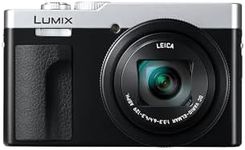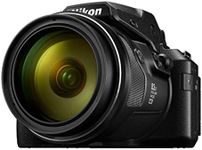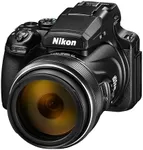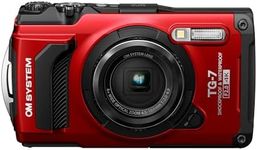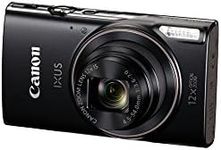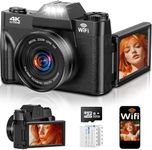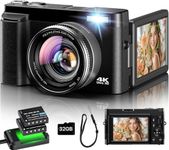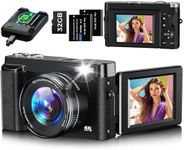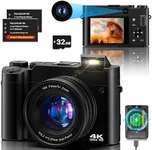Buying Guide for the Best Compact Zoom Cameras
Compact zoom cameras are a great choice for those who want the convenience of a small, portable device with the ability to capture distant subjects. These cameras are perfect for travel, events, or everyday photography where you might need to zoom in on your subject without carrying bulky equipment. When choosing a compact zoom camera, it's important to consider several key specifications that will affect the quality of your photos and your overall experience with the camera.Zoom RangeThe zoom range of a camera refers to how far you can magnify your subject. It's important because it determines how close you can get to distant objects without physically moving. Zoom ranges are often expressed in terms like 10x, 20x, or 30x, indicating how many times closer the camera can make the subject appear. If you plan to photograph wildlife or sports, a higher zoom range might be beneficial. For everyday use or travel, a moderate zoom range should suffice.
Sensor SizeSensor size is crucial because it affects image quality, especially in low-light conditions. Larger sensors generally capture more light and detail, resulting in better image quality. Compact zoom cameras typically have smaller sensors compared to DSLRs, but within this category, you can find variations. If you prioritize image quality, look for a camera with a larger sensor. However, if portability is more important, a smaller sensor might be acceptable.
Image StabilizationImage stabilization helps reduce blur caused by camera shake, especially at longer zoom ranges. This feature is important for achieving sharp images when shooting handheld or in low-light conditions. There are different types of stabilization, such as optical and digital. Optical stabilization is generally more effective. If you often shoot in challenging conditions or without a tripod, prioritize cameras with good image stabilization.
MegapixelsMegapixels refer to the resolution of the camera's sensor, indicating how many pixels are used to create an image. While more megapixels can mean more detail, it's not the only factor in image quality. For most users, anything above 12 megapixels is sufficient for high-quality prints and digital use. If you plan to crop images or print large photos, consider a camera with higher megapixels.
ConnectivityConnectivity options like Wi-Fi, Bluetooth, or NFC allow you to easily transfer photos to other devices or share them online. This is important for convenience and quick sharing. If you frequently post photos on social media or need to transfer images to your phone or computer, look for cameras with robust connectivity features. If you prefer to manage your photos manually, this might be less of a priority.
Battery LifeBattery life determines how long you can use the camera before needing to recharge or replace the battery. It's important for uninterrupted shooting, especially during travel or long events. Battery life is usually measured in the number of shots per charge. If you plan to use the camera extensively without access to charging, look for models with longer battery life or consider carrying spare batteries.


